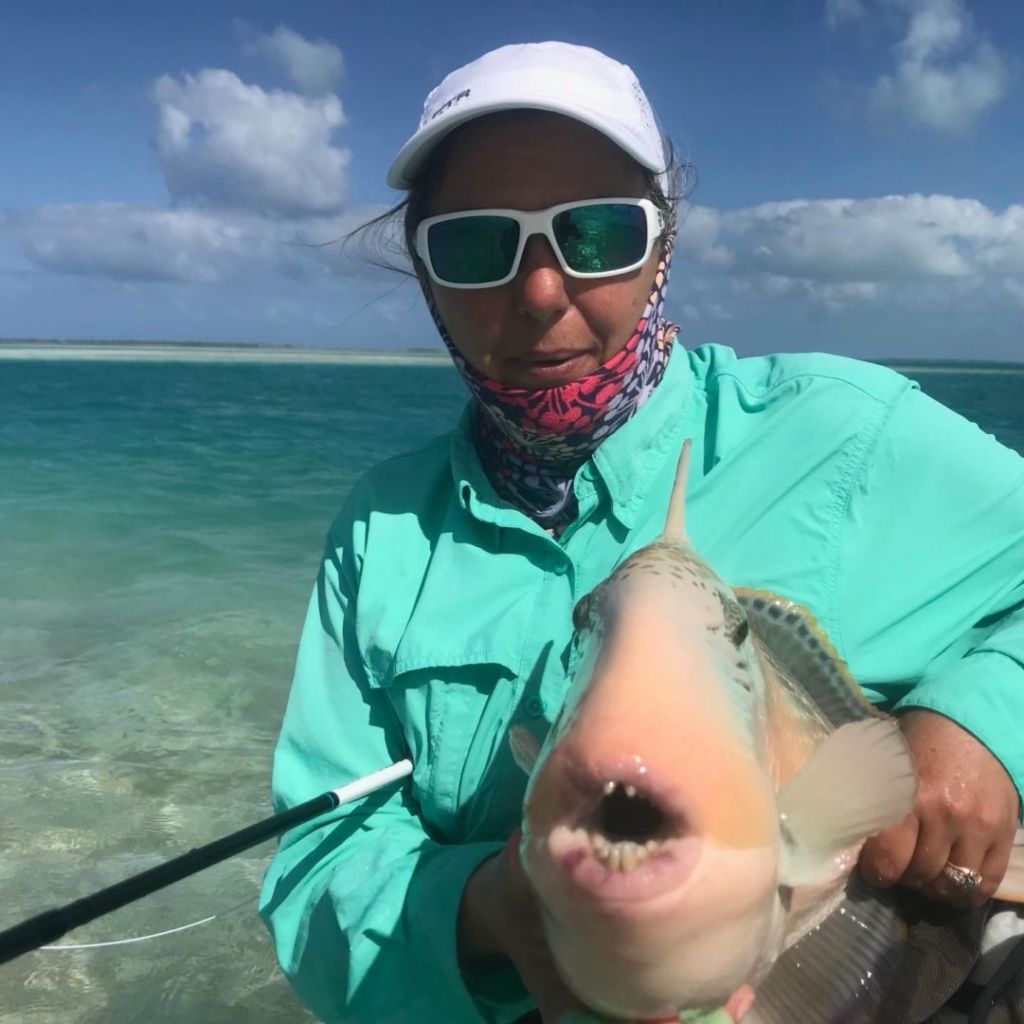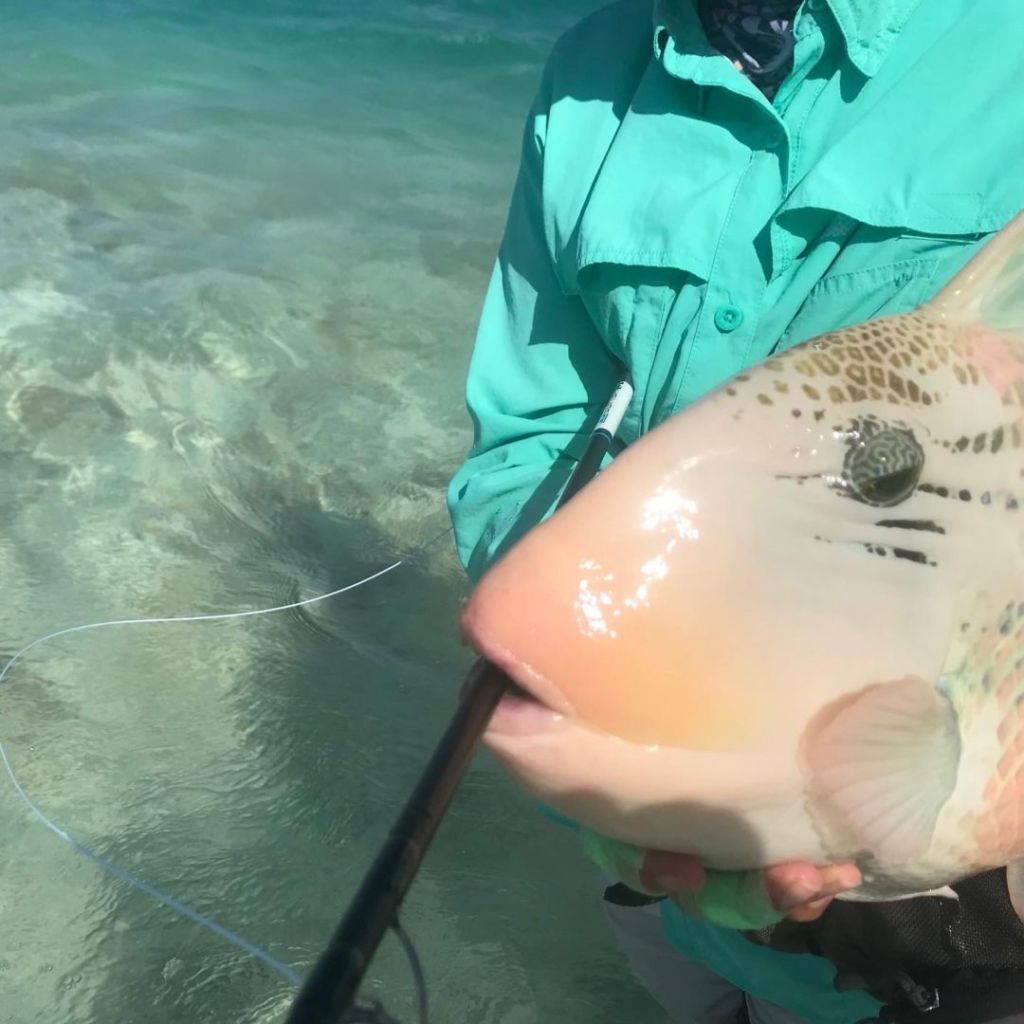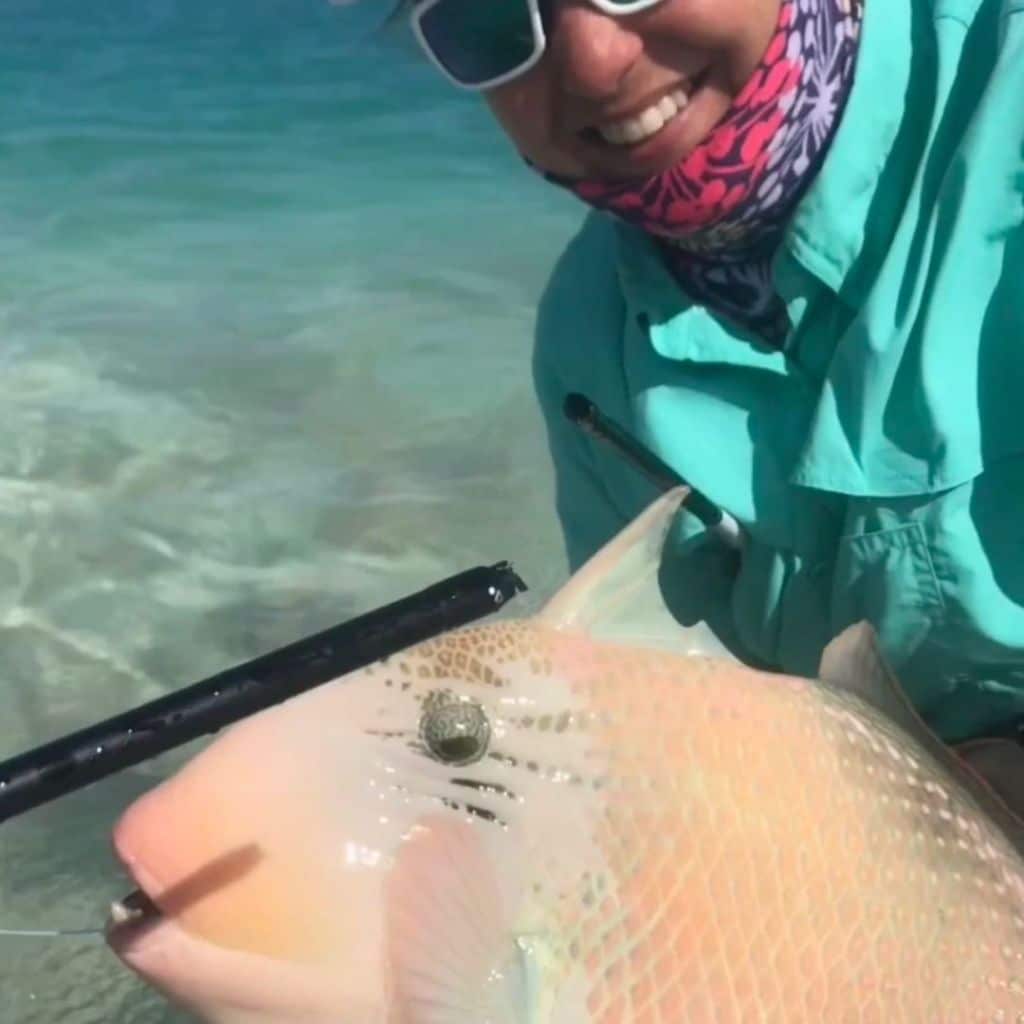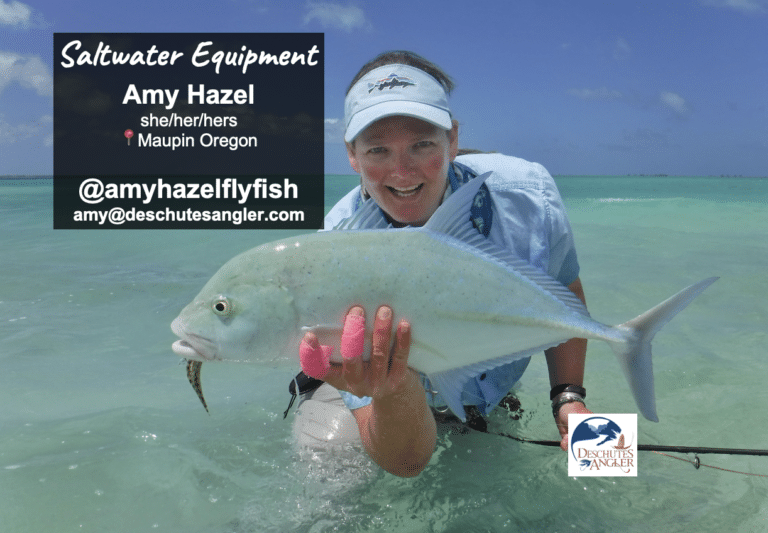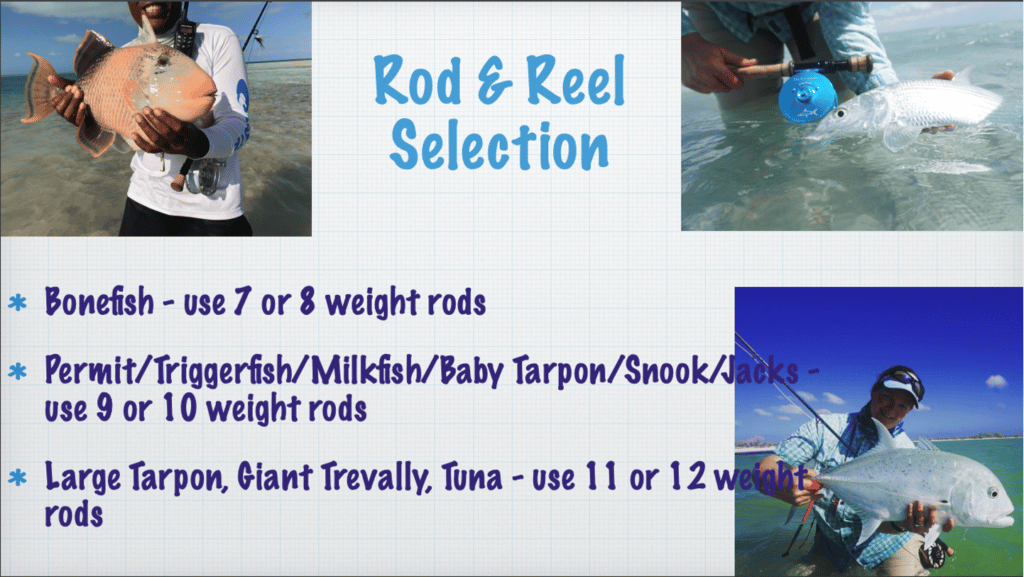
Saltwater Fly Rods
- Weight Rods
- Dependent on size of fish and size of flies you’ll be fishing for.
- Length
- 9′ is most ideal.
- Material
- Graphite is most common.
- Think of parts that won’t rust such as an anodized aluminum reel seat vs wood.
- Action
- Fast action fly rods are most recommended.
- You want a quick recovery to allow you to punch through the wind and make your cast more quickly.
Saltwater Fly Reels
Your rod and your reel are a team. Have the correct sized reel for the specific weight fly rod. Any rod or reel can break during a saltwater trip so we highly recommend taking a back-up. Here are a few suggestions when choosing a reel for your next saltwater adventure.
- Size
- Need a large enough reel to hold backing and the larger sized salt water lines.
- Material
- Anodized to prevent rusting and scratches.
- Drag System
- Want a Sealed Disk Drag and not a “Click and Pawl” Drag System
- Large Arbor
- A larger arbor reel will allow you to retrieve your line more quickly. Saltwater fish are much faster and stronger than most freshwater species.
Lines
Saltwater fly lines are developed to withstand the heat of the climate. Research the specific lines and tapers you’ll need for your destination and fish species.
- Types
- Floating, intermediate sink or full sink lines.
Flies
There are two type of fish in the ocean, bottom feeders and predators. What fish species will you be fishing to? Saltwater fly patterns are designed to mimic baitfish, crabs, and shrimp.
- Hooks
- Saltwater flies are tied on heavy gauge hooks build from stainless steel. The hooks are stronger and will not rust.
- Materials
- Saltwater flies are tied mainly from synthetic materials like super hair, krystal flash, and sparkle braid.
- The synthetic materials that are used to tie saltwater flies are stiffer in nature, and tend to push more water as they are being retrieved through the water column.
- How Many to Bring?
- Bring a couple dozen of different crab and shrimp patterns and at least a few bait fish patterns and sizes.
Fly Boxes
The saltwater fly box should be big enough for the size and number of flies you intend to carry and small enough to fit into whatever you plan to carry the box.
Saltwater flies need space. They are tied on big hooks (my box has hooks in the 2 to 4/0 range) with lots of materials that stick out and take up space (i.e., weed-guards, protruding mono eyes, crab bodies, and legs that stick out). Spacing is important and some fly box manufacturers do not get this (or the need for thicker foam). When you are shopping, insert some salt flies and then shake the box to see if they stay put.
Pliers, Nippers, Nail Knot Tool and reel tool
Bring equipment that is anodized and won’t rust in the saltwater. Don’t forget your reel tool if needed.
- Size and Strength of Equipment
- You’ll need strong enough pliers to remove a large strong hook out the mouth of a strong and sometimes toothy saltwater fish.
- Nippers need to be able to cut through larger tippet and fluorocarbon.
- Most trout nippers for 4-6x tippet just won’t’ cut it! Both literally and figuratively.

Polarized Sunglasses
Sunglasses could arguably be one of the most important pieces of equipment when saltwater fishing. Be sure they are continually cleaned and you are wearing the correct color lenses for your specific fishing techniques. Glass lenses are recommended.
Anything can happen in the Saltwater
There are two type of fly rods. One that is broken and one that is not broken yet! Check out this series of photos with an unfortunate situation with with triggerfish.
